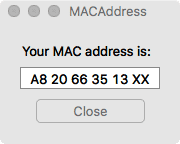What's USB, synchronous and asynchronous, implicit feedback, WDM and CoreAudio?
"Universal Serial Bus" (USB) is an external peripheral interface standard for data transmission. USB 1.1 and USB 2.0 "full speed" operate at 12Mbps and provides up to 8 uncompressed audio channels at 48kHz / 16bit.
USB2.0 "high speed" (480Mbps), USB3.0 "superspeed" (5Gbps), USB3.1 "superspeed+" (10Gbps) and USB3.2 (20Gbps) offer higher samplerates, bitrates, lower latency and more audio channels.
So called synchronous designs derive the samplerates from the USB clock. This increases the compatibility. e.g. it works with any smartphone etc. On the downside the audio samplerate contains more jitter, as there's on-purpose jitter on the USB clock from "clock spreading" technologies.
Asynchronous designs use samplerates from crystals, external masterclocks or audio PLLs. If not in implicit mode, an additional USB feedback endpoint reports the rounded current samplerate, relative to the USB frame clock.
Implicit feedback means the driver uses the number of sample frames in the input stream's packets to construct the packets for output streams. No feedback endpoint is required and perfect syncronisation is ensured. This had always been the concept of Ploytec drivers.
Windows WDM "Windows Driver Model" audio is a basic standard, even supported by Windows Mediaplayer.
Mac OS X and iOS provide an advanced Audio and MIDI system called Core Audio, being part of the operating system. Many USB audio interfaces are "class compliant", work out of the box on the Mac and don't need additional drivers.
Still, for interfaces needing a driver, Ploytec supplies a USB Audio HAL-plugin driver for Mac OS X.
low latency
What's the difference to freeware drivers?
The Ploytec USB Audio driver works in kernel mode without using the Windows usbaudio.sys. This means direct access to the hardware and way better performance compared to simple solutions.
Freeware drivers are adapters sitting on the operating system's drivers. It's a nice option for built-in soundcards, but offers way less performance if used for external devices, compared to "real" drivers.
It's also possible to use such on top of the Ploytec USB Audio driver. Don't be confused with the low latency value displayed - it's just what's added on top of the real latency.
kernel mode driver
What software is this working with?
It runs with e.g. Ableton Live, Adobe Audition, Alca Tech BPM Studio, Apple Logic, Avid ProTools, Bandlab Cakewalk, Cockos Reaper, Native Instruments' products, Presonus StudioOne, Propellerheads Reason, Serato DJ software and many other audio applications.
If you consider buying the commercial version of the USB Audio driver, please test the demo.
After I bought it, how do I receive updates?
You will get eMail notifications about updates. It's essential that you let us know about changes of your eMail address.
Mac hardware address / What happens if I decide to buy a new computer?
Windows: The key will still be working.
Mac: You just tell us the new hardware address data (with XX instead of the last two digits). The driver for your new machine will be sent to you within one working day.
You can alternatively use this tool application to find the hardware address:
Is interface XYZ supported or do you have plans to do so?
Basically the driver only works with devices "known" from its "list". As there's a lot of units using Texas Instruments/Burr Brown chipsets without unique IDs there's a chance your "whatever" box works, but please don't blame us if it doesn't.
We plan to add suport for Mbox2 and Mbox mini with a future update.
Why don't I get a reply on my enquiry?
Believe it or not - the most common reason is wrong date and time settings on computers. It's just impossible to find eMails that come in with a date of one month or year ago. Loss of data for technical reasons might happen but it's really rare. If your eMails are bouncing, you can use usb_audio@web.de instead.
